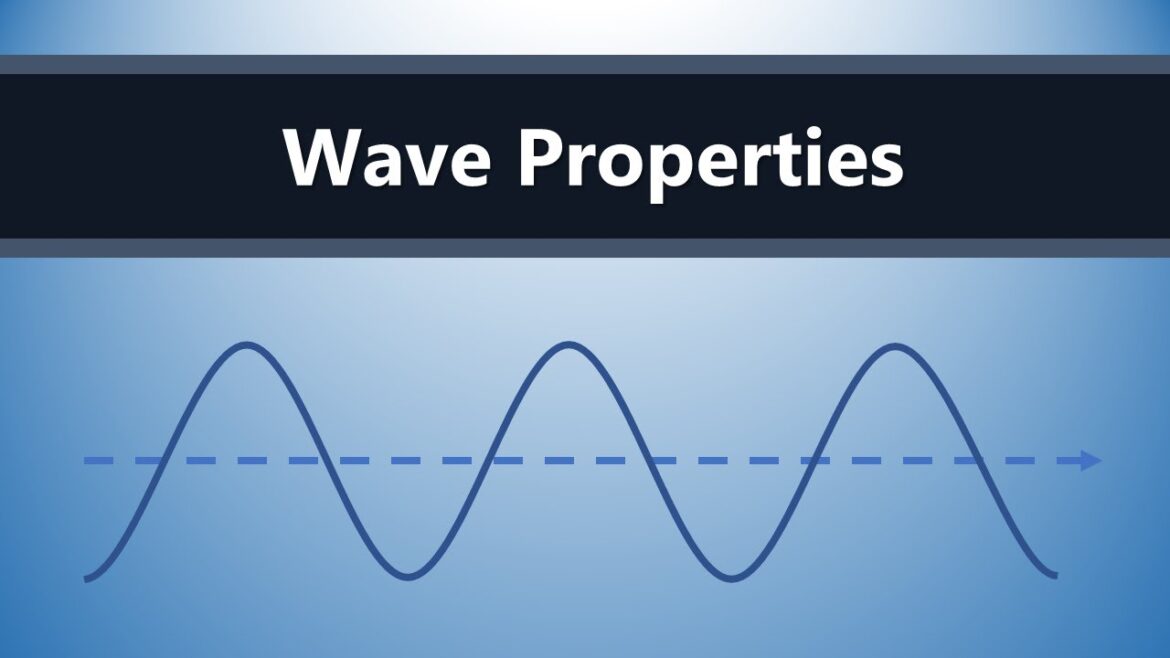To understand what a wave is, it helps to study its properties. They provide information about the type of wave and explain the behavior of waves
Wave properties help to understand what a wave is
Waves are created by vibrations that propagate or when matter is disturbed by another medium. They can unfold peacefully on a water surface or devastate entire regions as earthquakes – depending on how much energy they transport. However, waves can be predicted by knowing their properties.
- There are a number of parameters that describe the speed and intensity of waves. These include the wave crest, the wave trough, the amplitude, the wavelength, the path difference, the frequency, a possible phase shift and the phase velocity.
- Waves are displayed graphically as sinusoidal curves. To do this, imagine a diagram with X and Y coordinates. X describes the horizontal axis, Y the vertical axis. In this representation, the wave expands between the points +1 and -1, forming the familiar serpentine pattern.
- In this example, each wave starts at the zero point of the x-axis and moves to +1. It then falls back to 0 and drops to -1 before returning to the zero point. The point at which the wave reaches +1 is called the crest of the wave. The deepest extent of the wave, i.e. -1, is the wave trough. The distance the wave travels between +1 and the x-axis or -1 and the x-axis is the amplitude. The distance between the starting point and the end point of the wave is called the wavelength.
- If the diagram shows more than one wave curve, the wavelength also measures the distance between two wave crests or two wave troughs. In this representation, there is more than one curve, which are referred to as oscillations. The x-axis becomes the t-axis in this model. It shows the time in which the wave performs how many oscillations and thus defines the frequency.
- The speed at which a wave propagates is called the phase velocity. Depending on the frequency, this differs depending on the distance traveled and the time required. The greater the amplitude of a wave, the further it has to travel. Waves with small amplitudes travel significantly faster
- The distance between two identical points that are on different waves is the gear difference. This becomes relevant when several waves occur slightly offset to each other. This phase shift can be understood as a phase difference, as the difference between the two phase oscillations is calculated as the difference
Wave types and their meaning
All waves share these basic properties. Nevertheless, waves differ from each other in their oscillation behavior. Transverse waves spread out in space and oscillate vertically. They are also called transverse waves. Meanwhile, longitudinal waves develop along the direction of propagation and oscillate in the same direction as the wave.
- Examples of transverse waves are electromagnetic waves. These occur in visible light, X-rays and microwaves. In a graph, such a wave would expand to the right. The direction of its oscillation would be at right angles, i.e. transverse to the direction of propagation. The wave can be recognized by high deflections between the crest and trough. Water waves also belong to this category.
- Longitudinal waves are sound waves. They are created by compression of the air. When a sound source produces a sound, the air molecules move back and forth in the direction of sound propagation. This causes the sound to be transmitted. It also characterizes longitudinal vibrations. Speech is transmitted by longitudinal waves, as are sounds from loudspeakers. They are relevant in acoustic engineering and ultrasound examinations.
- The knowledge of wave properties is particularly important in earthquake research. The location of the epicenter can be determined by analyzing recorded primary and secondary waves. Primary waves are longitudinal waves that can propagate in rocks, water and in the liquid interior of the earth. In contrast, secondary waves are transverse waves, which only develop in solid bodies. Therefore, in earthquake research, the simplified rule is: where there are no S-waves, there are no liquid areas in the earth’s interior.
